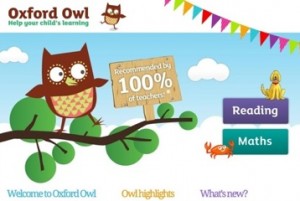curriculum expectations extensive reading language courses Language learning school management self-study TED
by sendaiben
2 comments
New Educational Paradigms
Sugata Mitra’s article in the Guardian on Saturday was very interesting. If you have seen his TED talks (and they are well worth watching), you will know the kind of educational changes he is looking to make.
What struck me is how similar it is to what my collaborator Daniel E. and I are trying to do at Tohoku University. There is a common thread running through our reading, discussion, presentation, and computer classes. We call it ‘practical’, ‘industrial’, or ‘student-focused’ English. To be honest, we haven’t found the perfect descriptor yet 😉
All of the classes are built on the following principles:
1. content and participation are student-generated
2. the bulk of the teacher’s work happens outside the classroom in planning and preparation
3. teachers have a coaching rather than instructional role
4. students are active and spend most of their time using English in pairs or small groups
5. teachers have high expectations regarding student achievement
We’ve mainly been talking about extensive reading so far, but there are plans afoot for a guide to leading discussion classes, with online study and presentation to follow after that. For now, you can catch us at the Extensive Reading World Congress in Seoul in September, or at JALT National in Kobe in October.
Or, you know, leave a comment here if you like!
conference extensive reading graded readers Language learning presentations Reading
by sendaiben
4 comments
Readability (and the lack of it) in graded readers
At the JALT Pan-SIG conference a few weeks ago (my favourite conference in Japan) I attended two extremely thought-provoking lectures, back to back. Both of them were talking about something very similar, something that has also been coming up in conversations with students this week.
The topic was readability of graded readers, or why some books are easier to read than others.
Marcos Benevides has a great blog post outlining the content of his talk. It’s well worth taking a few minutes to read that now.
Amanda Gillis-Furutaka, from Kyoto Sangyo University, talked about her fascinating research into the specific problems students have when reading English text. Her findings were echoed by my students when I talked to them about their reading in extensive reading classes this week. If you have the chance to attend one of her presentations on this topic at JALT or elsewhere, please consider doing so.
So what makes books difficult for students (focusing on students reading texts up to around 1000 headwords, ie beginner to lower-intermediate readers)? In short, the following:
-number of characters (the more characters the harder it is to understand the story)
-the complexity of the language (modal verbs and allegory are a real barrier to understanding)
-literary devices such as changing between different perspectives, changing from the present to the past suddenly, or unexpected plot twists
While these insights are perhaps most useful to authors and publishers, they can also help teachers recommend books for students (and know which books to put off until later!). Really interesting stuff, and I’m looking forward to reading Ms Gillis-Furutaka’s research when she publishes it.
EFL eikaiwa ES extensive listening extensive reading kids language courses Language learning materials online resources oxford owl Oxford Reading Tree Reading self-study websites young learners
by sendaiben
leave a comment
Oxford Owl website
This is another post I have been meaning to write for a while. Oxford Owl is a free website created by Oxford University Press. It has a range of useful resources -I’ll briefly list a few here.
The website has reading and maths sections. I haven’t done much with the maths so far.
The reading section has a range of free ebooks from the Oxford Reading Tree series. Most of the books can be read online, and feature the art, text, and audio. This is a wonderful resource for self-study at home or in the classroom.
There are also a couple of online games and a range of printable resources for students.
Finally, there is a lot of advice for teachers and parents on how to teach reading and support students with reading practice. Although much of this is aimed at native speakers, a lot of it transfers quite well to EFL.
Is anybody using Oxford Owl? Any good features I have missed? Please leave a comment below:
curriculum expectations high school language courses Language learning public policy teaching
by sendaiben
5 comments
If I ruled the world… high school English in Japan
This is the third of four posts on reforming English education in Japan. You can see my thoughts on elementary school here, and on junior high school here.
High school is a crucial step within Japan’s English educational system. It is the gateway to university, and currently has the most powerful external incentives for students. Get into the right high school, and you’ll have a shot at a good university. Graduate from a good university (and let’s face it, once you get in it’s not very difficult to graduate) and you’ll be set for life.
That’s how the script used to go. It’s shifting now, which is why we are seeing change on the horizon. Here is my take on high school English education in Japan.
The Current Situation
Most students attend junior high school then go to a separate senior high school. Entry is competitive, and students take the high school test or take advantage of a parallel ‘recommendation’ system (suisen). The system is designed to select candidates based on academic achievement and potential.
Once in high school, students focus on preparing for university entrance tests (if they attend an academic-track high school) or on getting vocational qualifications (if they attend a vocational high school).
From this month all high school English classes are supposed to be taught in English (something that was also part of the 2003 Course of Study but was not successfully implemented) but we will have to wait and see how widespread this turns out to be in practice.
My Thoughts on the Current System
High schools have a lot going for them. They select students based on academic ability. High school teachers are better qualified than junior high school teachers (see MEXT figures for English teachers here). Students are more mature and more conscious of their goals -sometimes 😉
Ironically, English classes at vocational schools are often more practical than classes at academic schools. Freed from the pressure of cramming huge amounts of vocabulary/grammar for the university tests, teachers are free to work at the students’ level and have them work on their communicative competence. Sadly many teachers instead do an ‘academic lite’ class, reviewing junior high school vocabulary/grammar.
The falling number of children due to demographic change is putting a lot of pressure on high schools. The best public and private schools still have students competing to get in, but other schools are becoming less able to select as they only get as many applicants (or fewer) as they have places.
The governments plan to use TOEFL to screen applicants to university (which I disagree with) also has the potential to shake up SHS education.
My Recommendations
These are the things I would most like to see changed in high school English education (many are similar to my requests for junior high school):
- Increase English input for students
This has three parts: teach students why input is important and how they can access it, expect students to do a certain amount of input-based self-study per week, and monitor their progress. Done well, this can have a significant effect on practical English ability, as well as helping students become independent learners. This should include extensive reading with graded readers, as well as online listening and watching videos.
- Increase meaningful English output from students
Students should be speaking and writing ‘real’ content regularly. Writing their reactions or ideas, giving speeches, and having discussions about topics of interest will help them build up their language proficiency. - Introduce content-based lessons
Give students the opportunity to interact with news and current issues through English. This can include reading online, simplifying news stories for the classroom, and using contemporary stories as the basis for output activities as described above. - Create meaningful English qualifications
I would like to see the government create meaningful English qualifications that students could take to demonstrate their ability. At the moment, the STEP Eiken, the TOEIC, and to a limited extent the TOEFL tests fulfil this role at the moment, but they don’t do a very good job of measuring overall English proficiency, particularly with regards to speaking and writing. Perhaps some kind of language portfolio would be the best way of achieving this. The qualifications would ideally be recognised by universities and employers, and provide incentives for students to work on developing actual English skills. - Provide online courses
Based on best practice worldwide (see the Khan Academy or online university courses for examples) create online content using the best teachers. By flipping the classroom in this way, students can use class time for practice and interaction, and learn concepts for homework, in an environment where they can repeat or rewind as much as they need. This would have the welcome side-effect of reducing the importance of cram schools for university entrance. It would also reduce the influence of unqualified or unskilled teachers (only 50% of senior high school teachers hold intermediate English qualifications).
I struggled writing this one. By the time students get to high school, they’ve already had five years of English at school. Any problems have been compounded and it is unlikely that high school alone will revolutionise their experience. For the same reason, changes here will probably have less effect than they would do in elementary school or junior high school.
Still, the fact that students are academically streamed should make it easier for teachers to deliver content appropriate to most of their charges.
Many young people I speak to were profoundly disappointed when they started high school and found that the classes were a continuation of what they had been doing in junior high school. They had honestly been expecting to have things step up a notch and become more challenging/practical.
What do you think? Is senior high school English a lost cause? What practical steps could we take to improve English classes?




